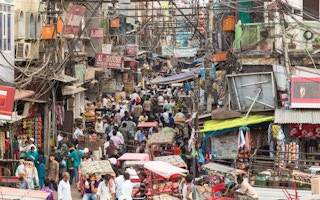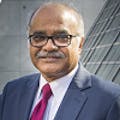It has been said that statistics are people with the tears washed away. This is a message that attendees of the World Bank and International Monetary Fund spring meetings in Washington, DC, should bear in mind as they assess progress on global development.
To continue reading, subscribe to Eco‑Business.
There's something for everyone. We offer a range of subscription plans.
- Access our stories and receive our Insights Weekly newsletter with the free EB Member plan.
- Unlock unlimited access to our content and archive with EB Circle.
- Publish your content with EB Premium.
Despite the impressive gains many countries have made, hundreds of millions of people are still being left behind. To highlight this problem, the United Nations Development Program has made social and economic inclusion a major theme of its 2016 Human Development Report, “Human Development for Everyone.”
The report offers an in-depth look at how countries, with support from their partners, can improve development results for all of their citizens, especially the hardest to reach.
Since the UNDP issued its first report in 1990, we have seen significant improvements made in billions of people’s lives worldwide. Back then, around 35 per cent of humanity lived in extreme poverty. Today, that figure stands at less than 11 per cent.
Likewise, the proportion of children dying before their fifth birthday has been halved, partly because an additional two billion people now benefit from better sanitation and wider access to clean drinking water.
We should take pride in these achievements; but we must not rest on our laurels. A sizeable number of people are still missing out on these gains. Worse, they are now in danger of being forgotten – literally so. Sometimes, they are not recorded in official statistics at all.
And, even when they are, national averages can paint a distorted picture: an increase in average income, for example, might conceal the deepening poverty of some, as it is offset by large gains for a wealthy few.
One of the most profound demographic shifts in recent years has been the massive expansion of a middle class in the global south. The convergence of global incomes has blurred the line between “rich” and “poor” countries. But, at the same time, inequality within many countries has increased. As a result, poverty – in all forms – is a growing problem in many countries, even as the number of people living in poverty worldwide has declined.
Confronting this challenge will require us to rethink fundamentally what development should look like, which is why the UN’s Sustainable Development Goals, unlike the previous Millennium Development Goals, apply to all countries – not just the poorer ones.
After decades of making steady development gains, what can we do differently to help the planet’s most disadvantaged people? As the latest Human Development Report makes clear, there is no simple answer. One reason is that those who are being left behind often face disadvantages on several fronts.
They are not just short of money; often, they are also sick, uneducated, and disenfranchised.
“
Confronting this challenge will require us to rethink fundamentally what development should look like, which is why the UN’s Sustainable Development Goals, unlike the previous Millennium Development Goals, apply to all countries – not just the poorer ones.
The problems that affect the world’s most disadvantaged people begin at birth, and worsen during their lifetime. As opportunities to break the cycle are missed, these disadvantages are passed on to subsequent generations, reinforcing their impact.
Still, while today’s development challenges are numerous and complex, they also share common characteristics. Many of the disadvantaged belong to specific demographic groups that tend to fare worse than others in all countries, not least because they face similar economic, legal, political, and cultural barriers.
For example, indigenous peoples constitute just 5 per cent of the global population, but account for 15 per cent of the world’s poor. And, to participate in work and community life, people with disabilities must overcome obstacles that the rest of us often do not even notice.
Last but not least, women and girls almost everywhere continue to be underrepresented in leadership and decision-making circles, and they often work more hours for less money than their male counterparts.
Although development policies will continue to focus on tangible outcomes – such as more hospitals, more children in school, and better sanitation – human development must not be reduced only to that which is quantifiable.
It is time to pay more attention to the less palpable features of progress, which, while difficult to measure, are not hard to take a measure of.
All people deserve to have a voice in the decisions that affect their lives; but the most marginalized in society are too often denied a say of any kind. Ensuring that those most in need are not forgotten – and that they have the freedom to make their own choices – is just as important as delivering concrete development outcomes.
History has shown us that many of today’s challenges can be overcome in the years ahead. The world has the resources and the knowhow to improve the lives of all people. We just need to empower people to use their own knowledge to shape their futures. If we do that, more inclusive development will be within our reach.
Selim Jahan is Director of the Human Development Report Office and lead author of the Human Development Report.
© Project Syndicate 1995–2017











